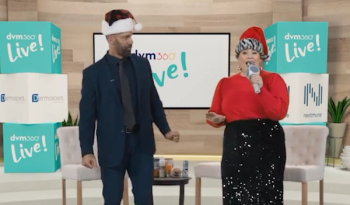
5 common oncology mistakes
Explore common oncology mistakes in veterinary practice with Rachel Venable, DVM, MS, DACVIM (Oncology) on this episode of The Vet Blast Podcast presented by dvm360.
Did you know that November is Oncology Awareness Month? In recognition of this, this week's regularly scheduled episode of The Vet Blast Podcast presented by dvm360 is all on oncology! Our host, Adam Christman, DVM, MBA, welcomed Rachel Venable, to talk about the 5 common oncology mistakes that veterinary professionals could be making in their practice. From the need for proper diagnostic procedures, to the importance of a whole body x-ray, particularly 3-view chest x-rays, for comprehensive cancer detection, Venable and Christman are providing listeners with a resource they can use to help get these patients and clients, the care, support, and treatment they need.
Below is a partial transcript, edited lightly for clarity.
Adam Christman, DVM, MBA: Okay, so 5 common oncology mistakes from Dr Venable. I'm really curious to hear these. So let's talk about number one.
Rachel Venable, DVM, MS, DACVIM (Oncology): So the biggest thing is, we can't diagnose with our eyeballs. Right? Our eyes are not microscopes, and so if you remove something, please send it in. Just, if you remove a mass, anything that looks cancerous, include that as part of the cost of surgery. You know, I think if you let people kind of nickel and dime things, they will. But it's really so important because if it comes back, we have no idea what it was to begin with, and maybe intervention could have been done in the meantime, and we just had no idea.
So I would just recommend including that as part of the surgery package. Whenever you're removing lumps and bumps, just submit it for histo and get the full report, that shortened version that you can get, we really are missing important information.
Christman: I like that. It's a good part that I actually forget about as well..., Number 2, not doing a [fine needle aspiration] (FNA) or cytology before surgery or at the time of ultrasound. Tell us more.
Venable: You know, the common thing is, a pet comes in for a dental and we're just going to lop off these lumps, you know? But then one of them turns out to be a mast cell tumor. Maybe they notice when you're trying to remove it, it turns out to be a sarcoma. So if you had done [FNAs] of these lumps prior, then you would have known, 'oh, I need to actually get larger margins.' If you just barely remove something, what happens are the more aggressive cells are the ones that are moving away from the tumor. They're the ones that are on the edges, and those are the ones that always get left behind.
So often, when tumors recur, prognosis starts to go down. Doing another surgery could be more challenging. So if you're removing some lumps, I would [aspirate] just again. You can just make it part of your workup for this, of just doing a quick [FNA]. You can check it in the hospital, send it out if you find something odd, or...to get larger margins because you're worried it's something cancerous.
Listen to the full episode to hear the rest of Venable's common oncology mistakes here or where ever you listen to podcats.
Newsletter
From exam room tips to practice management insights, get trusted veterinary news delivered straight to your inbox—subscribe to dvm360.




